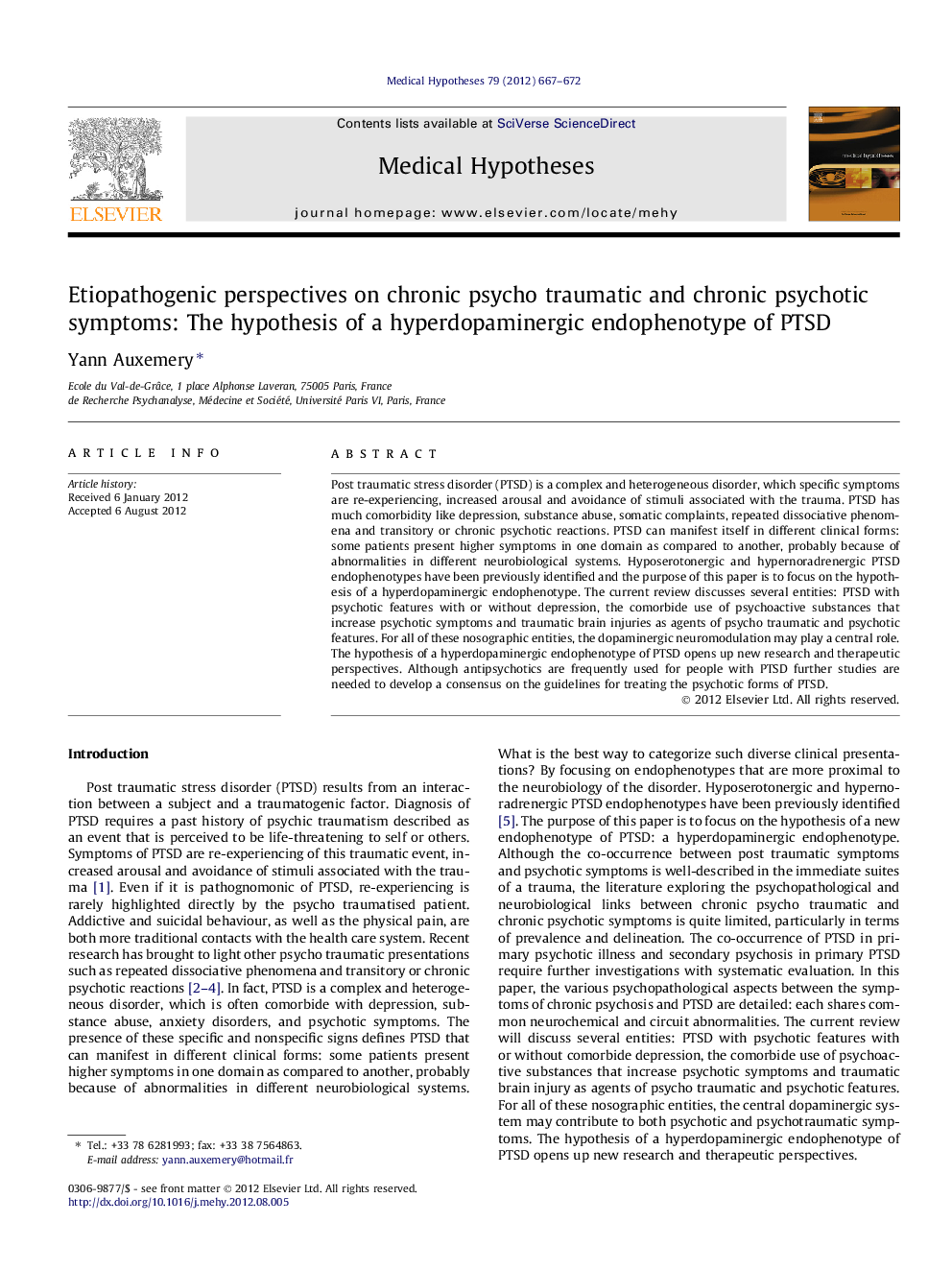| Article ID | Journal | Published Year | Pages | File Type |
|---|---|---|---|---|
| 2489344 | Medical Hypotheses | 2012 | 6 Pages |
Post traumatic stress disorder (PTSD) is a complex and heterogeneous disorder, which specific symptoms are re-experiencing, increased arousal and avoidance of stimuli associated with the trauma. PTSD has much comorbidity like depression, substance abuse, somatic complaints, repeated dissociative phenomena and transitory or chronic psychotic reactions. PTSD can manifest itself in different clinical forms: some patients present higher symptoms in one domain as compared to another, probably because of abnormalities in different neurobiological systems. Hyposerotonergic and hypernoradrenergic PTSD endophenotypes have been previously identified and the purpose of this paper is to focus on the hypothesis of a hyperdopaminergic endophenotype. The current review discusses several entities: PTSD with psychotic features with or without depression, the comorbide use of psychoactive substances that increase psychotic symptoms and traumatic brain injuries as agents of psycho traumatic and psychotic features. For all of these nosographic entities, the dopaminergic neuromodulation may play a central role. The hypothesis of a hyperdopaminergic endophenotype of PTSD opens up new research and therapeutic perspectives. Although antipsychotics are frequently used for people with PTSD further studies are needed to develop a consensus on the guidelines for treating the psychotic forms of PTSD.
